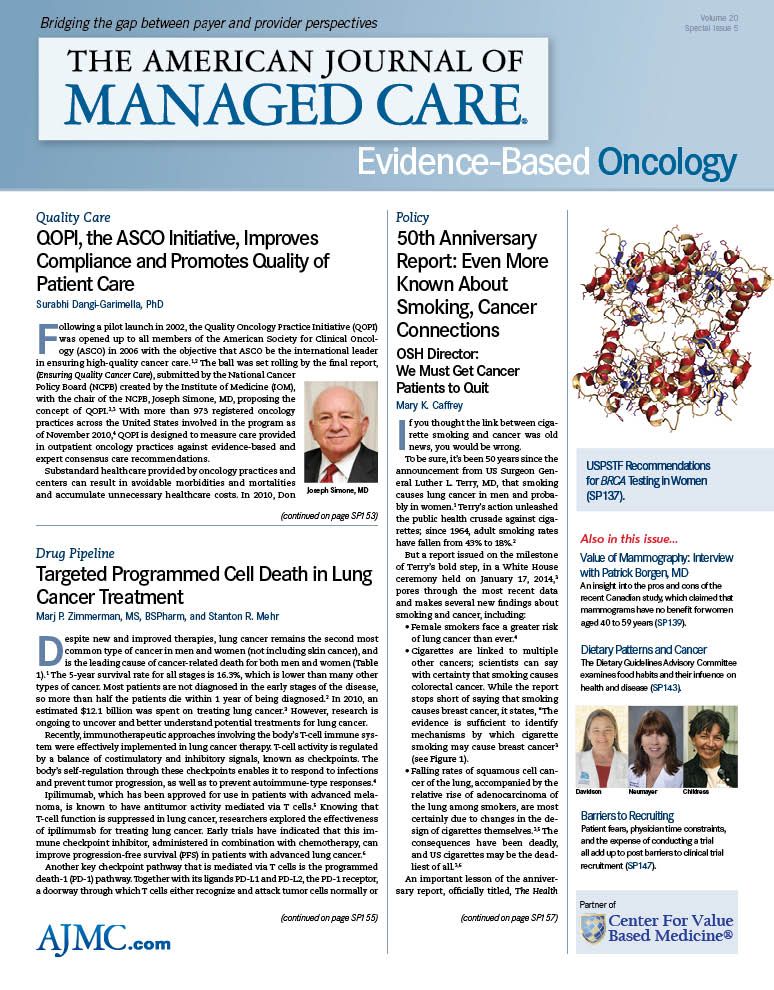Publication
Article
Evidence-Based Oncology
Nivolumab Provides Favorable Results in Patients With Advanced Melanoma
Author(s):
Programmed cell death-1 (PD-1) is a key immune inhibitory receptor expressed by activated T-cells and B-cells. Binding of PD-1 to its ligands PD-L1 and PD-L2, expressed on antigen presenting cells and cancer cells, turns off T-cell signaling to the lymphocytes and allows tumor cells to shut off the immune response. Many solid tumor types express PD-L1, and its expression is often associated with a worse prognosis. Blocking PD-1 is the novel approach being evaluated in cancer treatment and it has been reaping extremely favorable results (see “Targeted Programmed Cell Death in Lung Cancer Treatment,” cover).
A recent phase 1 trial report published in the Journal of Clinical Oncology evaluated the effect of intravenous nivolumab in 107 patients with advanced melanoma in an outpatient setting, every 2 weeks for up to 96 weeks. The patients were observed for overall survival (OS), long-term safety, and response duration after treatment discontinuation.
Patients receiving nivolumab had a median OS of 16.8 months; the 1- and 2-year survival rates were 62% and 43%, respectively. Of 33 patients with objective tumor regressions (31%), the estimated median response duration was 2 years.Of the 17 patients who discontinued therapy (not due to disease progression), 12 maintained a response for at least 16 weeks (range was 16 to 56 weeks).
Objective responses were observed in 33 of 107 patients, and 7 patients’ experienced stable disease lasting at least 24 weeks. Durable responses were observed across all the tested doses (0.1- to 10-mg/kg) of nivolumab. Unconventional response patterns that did not meet response evaluation criteria in solid tumors (RECIST) were observed in 4 patients. Of the 11 patients in whom the disease progressed at doses of 0.1- or 0.3-mg/kg nivolumab, dose escalation to 1.0-mg/kg did not help. Tumor regression in the 33 patients was observed at various sites, in both primary and metastatic lesions.
The most common adverse events observed included fatigue, rash, and diarrhea. Twenty-four of the 107 patients experienced grade 3 to 4 treatment-related adverse events. Treatment-related adverse events included skin disorders, GI events, and endocrinopathies. Although no drug-related deaths were observed in patients with melanoma, 3 treatment-related mortalities were observed in the overall population (2 patients with non-small cell lung cancer and 1 with colorectal cancer) associated with pneumonitis. Most adverse events were observed in the first 6 months of treatment; no cumulative toxicities were observed over a 2-year safety follow-up period.


